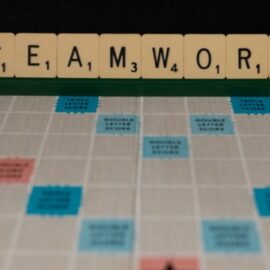

This article is an excerpt from the Shortform book guide to "Competing Against Luck" by Clayton Christensen. Shortform has the world's best summaries and analyses of books you should be reading.
Like this article? Sign up for a free trial here.
How does consistency in business create more success? What strategies can you use to create consistent business procedures?
In Clayton Christensen’s book, Competing Against Luck, he argues that the secret to business success lies in the power of consistency. By establishing repeatable procedures and ensuring consistent results, businesses can guarantee customer satisfaction and loyalty.
Read on to learn Christensen’s strategies for establishing consistency in business.
The Importance of Consistency in Business
Business consultant Clayton Christensen argues in his book Competing Against Luck that the end goal of all organizations should be to accomplish a specific customer task as well as possible. This includes designing an effective product and doing everything necessary to ensure that it satisfies the customers who buy it. To that end, Christensen underscores the importance of consistency in business, identifying a series of procedures that, when completed, always result in a product that gets the customer’s task done satisfactorily.
Christensen says you should then repeat these procedures. Consistent procedures in business mean that even if individual members of your organization come and go, the result stays the same, guaranteeing customer satisfaction.
For example, if you’re selling a video game that solves the task “give me a thrilling, immersive second life I can escape to,” you must establish a procedure for how you’ll resolve bugs that could ruin the immersive experience. This procedure might be: First, identify and record the bug; then, create a solution and run it on test servers; and finally, upload it to the game and publish an announcement to the players. Following these instructions in your business ensures that the team achieves consistency in their results every time.
| Counterpoint: Establish Goals, Not Procedures In First, Break All the Rules, Marcus Buckingham and Curt Coffman argue that establishing repeatable procedures for your employees to follow is a mistake. Different employees have different talents and weaknesses, and insisting on consistency in your business whereby they all work in the same way may hinder their productivity. Instead, they advise simply establishing goals—in Christensen’s terms, this would involve identifying a consumer task and then trusting your employees to discover for themselves the best way to accomplish it. Although this goal-oriented management means that you have to rely more on individual employees, running the risk of disrupting the work if they leave the team, Buckingham and Coffman would argue that this reliance is worth it. They maintain that strategic investment in employees is the number one factor in an organization’s success, resulting in increased productivity, profitability, employee retention, and customer satisfaction. |
Christensen offers two tips for establishing consistency in your business by using repeatable procedures to increase your company’s chances of success:
Tip #1: Use Repeatable Procedures to Determine Organizational Structure
Rather than defaulting to what you assume an organization like yours should look like, define the procedures necessary to accomplish a consumer task and create a corporate structure to match them, argues Christensen. This is necessary because if your organizational structure doesn’t match your task-focused procedures, you may end up with workers whose procedures are all productive in theory, but in reality work against each other.
For example, if you’re trying to sell fashionable winter coats, you might have a full research and development team trying to create warmer coats as well as a design team trying to create slimmer and more flattering coats. If you keep these teams separate, they might work against each other—the development team creating unflattering coats and the design team trying to strip away the parts making it warm. Instead, ensure no efforts are wasted by combining these two teams into a single design team attempting to resolve the consumer task of a warm coat that looks good.
| Counterpoint: Avoiding Collaboration Can Be Efficient The idea to communicate and collaborate across parts of your organization may seem obvious, but in High Output Management, Andrew Grove explains that there are valid reasons why companies choose to create more siloed organizational structures. Organizations in which each business unit tunnel-visions on their own procedures allow employees to specialize in the narrow set of procedures they’re most equipped to accomplish. As a result, employees worry less about the supplementary tasks needed to connect their work to the consumer task. When managers can successfully coordinate the work of separate business units to accomplish the consumer task, this kind of structure can be incredibly productive. For example, imagine you manage an ad agency that’s producing several television commercials at the same time. If you divide your employees into collaborative teams that each include a copywriter, a production crew, and an editor, it may be less productive than if you divided your employees into a copywriting team, a video production team, and an editing team. In the latter structure, each employee can focus on the one task they’re best at and work more efficiently. |
Tip #2: Acknowledge That Repeatable Procedures Can Change Over Time
Although the strength of organizational procedures is that they provide consistency in business and in your results when you repeat them, Christensen notes that sometimes, you’ll have to change these procedures over time, adapting to changing circumstances. Tying procedures to the consumer task makes this possible: Even if you completely overhaul your company’s procedures, if the new procedures still match the consumer task, you haven’t compromised the organization’s success.
For example, a movie theater focused on the consumer task of “entertain groups of friends and family when they’re looking to do something out of the house” might adapt to the rise of on-demand streaming by updating their procedures to give viewers a theater experience they can’t get at home. The theater could hire an event coordinator to throw unique social movie nights. Since these new events are directly serving the consumer task, they’ll help your business succeed.
(Shortform note: How specifically can you adapt your organization to changing circumstances? According to Jerry I. Porras and Jim Collins in Built to Last, companies that successfully evolve over time do so by allowing their employees more autonomy. This gives them opportunities to experiment at work and discover new, better ways to fulfill the consumer task. Additionally, these companies offer incentives that reward successful experimentation over repeating what’s worked in the past. Whereas Christensen recommends keeping procedures largely static to establish consistency in business—only changing in response to new circumstances—Porras and Collins maintain that the most forward-thinking and successful businesses make changes in advance of these trends.)

———End of Preview———
Like what you just read? Read the rest of the world's best book summary and analysis of Clayton Christensen's "Competing Against Luck" at Shortform.
Here's what you'll find in our full Competing Against Luck summary:
- How to analyze consumer demand to guide product innovation
- How you can design and sell a product that can't possibly fail
- Tips for increasing your company's chances of success






